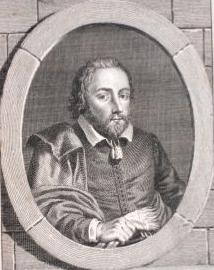Related Research Articles

James Shirley was an English dramatist.

Philip Massinger was an English dramatist. His finely plotted plays, including A New Way to Pay Old Debts, The City Madam, and The Roman Actor, are noted for their satire and realism, and their political and social themes.
The Night Walker, or The Little Thief is an early seventeenth-century stage play, a comedy written by John Fletcher and later revised by his younger contemporary James Shirley. It was first published in 1640.
Love Tricks, or The School of Complement is a Caroline stage play by James Shirley, his earliest known work.
The Lady of Pleasure is a Caroline era comedy of manners written by James Shirley, first published in 1637. It has often been cited as among the best, and sometimes as the single best, the "most brilliant," of the dramatist's comic works.
The Bird in a Cage, or The Beauties is a Caroline era comedy written by James Shirley, first published in 1633. The play is notable, even among Shirley's plays, for its lushness — what one critic has called "gay romanticism run mad."
The Witty Fair One is a Caroline era stage play, an early comedy by James Shirley. Critics have cited the play as indicative of the evolution of English comic drama from the humors comedy of Ben Jonson to the Restoration comedy of Wycherley and Congreve, and the comedy of manners that followed.
The Sisters is a Caroline stage play, a comedy written by James Shirley. It was the last of Shirley's plays performed in London prior to the closing of the theatres in September 1642, at the start of the English Civil War. "Slight in substance, The Sisters is excellent in matter of technique, and especially in...structural unity...."
The Brothers is a Caroline era stage play, a comedy written by James Shirley. First published in 1652, The Brothers has sometimes been hailed as one of Shirley's best plays, though it has also been a focus of significant confusion and scholarly debate.
The Changes, or Love in a Maze is a Caroline era stage play, a comedy of manners written by James Shirley, first published in 1639. It was one of Shirley's most popular comedies, especially in the Restoration era. The play is almost universally known by its subtitle.
The Royal Master is a Caroline era stage play, a comedy written by James Shirley, and first published in 1638. The play is "ranked by many critics as Shirley's ablest work in romantic comedy...It is a play notable for well-knit plot, effective scenes, pleasing characterization, clever dialogue, and poetic atmosphere."
The Humorous Courtier, also called The Duke, is a Caroline era stage play, a comedy written by James Shirley, first published in 1640.
The Example is a Caroline era stage play, a comedy written by James Shirley, first published in 1637. The play has repeatedly been acclaimed both as one of Shirley's best comedies and one of the best works of its generation. And it provides one of the clearest demonstrations in Shirley's canon of the influence of the works of Ben Jonson on the younger dramatist's output.
A Contention for Honor and Riches is a Caroline era stage play, a short drama or interlude written by James Shirley and first published in 1633. Generally classed as a morality play, it illustrates the continuing influence of archaic forms of drama on the relatively "sophisticated" or even "decadent" theatre of the Caroline era.
Honoria and Mammon is a Caroline era stage play by James Shirley, first published in 1659 though not produced until 2013. It is a revision and expansion of Shirley's earlier morality play A Contention for Honor and Riches, and illustrates the persistence of influence of archaic forms of drama through the final phase of English Renaissance theatre.
The Gentleman of Venice is a Caroline era stage play, a tragicomedy written by James Shirley, and first published in 1655.
The Maid's Revenge is an early Caroline era stage the play, the earliest extant tragedy by James Shirley. It was first published in 1639.
The Emperor of the East is a Caroline era stage play, a tragicomedy written by Philip Massinger and first published in 1632. The play provides an interesting example of the treatment of the Roman Catholic sacrament of confession in English Renaissance theatre.
Andrew Crooke and William Cooke were London publishers of the mid-17th-century. In partnership and individually, they issued significant texts of English Renaissance drama, most notably of the plays of James Shirley.
William Heminges, also Hemminges, Heminge, and other variants, was a playwright and theatrical figure of the Caroline period. He was the ninth child and third son of John Heminges, the actor and colleague of William Shakespeare, and his wife Rebecca.
References
- ↑ Arthur Huntington Nason, James Shirley, Dramatist: A Biographical and Critical Study, New York, 1915; reprinted New York, Benjamin Blom, 1967; p. 231.
- ↑ Terence P. Logan and Denzell S. Smith, eds., The Later Jacobean and Caroline Dramatists: A Survey and Bibliography of Recent Studies in English Renaissance Drama. Lincoln, NE, University of Nebraska Press, 1978; p. 163.
- ↑ Nason, p. 230.